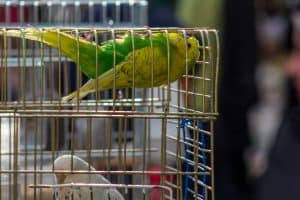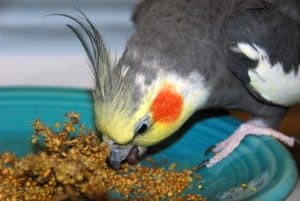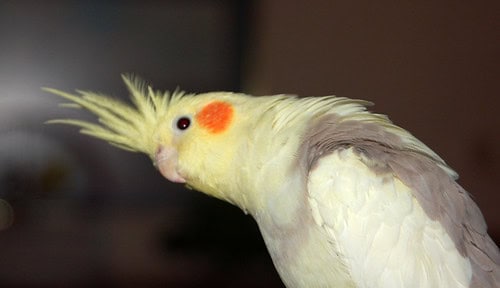Bringing a new cockatiel home can be as thrilling as it is daunting. Whether you’re a seasoned bird owner or a first-time pet parent, knowing what to do when you first bring your cockatiel home is crucial for setting the stage for a successful companionship. These charming birds, known for their vibrant personalities and impressive mimicry skills, require a welcoming environment to thrive.
It’s essential to prepare your home—and yourself—for the arrival of your feathered friend. From creating a safe, cozy habitat to understanding the basics of cockatiel care, there are several key steps you’ll need to take. Don’t worry; with the right preparation, you’ll be able to foster a nurturing relationship with your new pet from day one. Let’s dive into what you need to know to make your cockatiel’s transition into your home as smooth as possible.
Preparing Your Home for a New Cockatiel

When you first bring your cockatiel home, preparing your living space for the new arrival is crucial. This setup forms the foundation for a healthy and happy relationship with your pet.
Choosing the Right Cage
Selecting the perfect cage for your cockatiel involves considering size, materials, and placement. The cage should be spacious enough to allow your cockatiel to spread its wings and move around comfortably. Aim for a cage that is at least 24 inches wide, 24 inches deep, and about 36 inches tall.
Ensure the bars are horizontal to facilitate climbing, with a spacing no more than half an inch apart to prevent escapes. Position the cage in a room where your family spends a lot of time to promote socialization but avoid placing it in direct sunlight or drafty areas. Attachable food and water containers should be easy to access and clean.
Setting Up a Safe and Comfortable Environment
Creating a safe and nurturing environment includes providing various perches of different textures and thicknesses to keep your bird’s feet healthy. These should be made of natural wood, as they offer the best grip and mimic your bird’s natural habitat. Additionally, integrate a variety of toys to stimulate your cockatiel’s mind and prevent boredom—include items like hanging bells, ropes, or ladders.
Avoid toys made from toxic materials or that have small, detachable parts which could pose a choking hazard. Lastly, maintaining a regular cleaning schedule for the cage and accessories is crucial for preventing disease. Clean the cage weekly, and ensure food and water dishes are washed daily.
Helping Your Cockatiel Settle In
Once you’ve brought your cockatiel home, it’s essential to help it feel safe and comfortable in its new surroundings. Place the cage in a quiet area to minimize stress and give your bird a chance to adjust without overwhelming stimuli.
Ensure the cage is equipped with familiar items if possible, such as the same toys or perch textures it was used to before. The first day is not just about physical comfort but also about creating a trust-based environment.
Offer your cockatiel the same food it was eating previously to avoid any digestive upset. This continuity in diet not only comforts your bird but also prevents nutritional imbalance as it acclimates to its new home. It’s also a good time to introduce a clean water source; ensure it’s fresh and filled regularly to promote good hydration and health.
Initial Interaction and Bonding
Bonding with your new bird starts from day one. Initiate this process by spending time near the cage, talking softly to acquaint your pet with your voice. This non-intrusive interaction helps build trust without the immediate need for physical contact, which can be too stressful initially.
After a few hours, you can try hand-feeding your bird a tasty treat like spray millet. This activity not only helps in establishing a feeding routine but also strengthens your bond as it begins associating you with positive experiences. However, maintain a gentle approach—move slowly and avoid sudden movements to prevent scaring your cockatiel.
As your bird adjusts to the new environment and your presence, gradually increase the time you spend interacting. Remember, patience plays a key role in bonding with your cockatiel, and taking things slowly helps ensure a comfortable adjustment period for your new companion.
Feeding Your New Cockatiel

Once your new cockatiel feels at ease in its new home, ensuring it receives the proper diet is pivotal. This section guides you through understanding the dietary needs of cockatiels and establishing a consistent feeding routine.
Understanding Cockatiel Diet Needs
Cockatiels thrive on a varied diet consisting primarily of seeds, pellets, and fresh foods. Pellets should form about 60-70% of your bird’s diet as they are nutritionally balanced. The rest should include fresh vegetables and fruits, with seeds as a smaller portion of the meal plan.
Ideal fresh foods for cockatiels include leafy greens such as spinach and kale, and fruits like apples and bananas—always ensuring any produce is thoroughly washed to remove pesticides. However, avoid giving your bird avocado, chocolate, caffeine, or alcohol, as these can be toxic to them.
Establishing a Feeding Routine
Developing a feeding schedule helps stabilize your cockatiel’s eating habits and overall health. It’s best to feed your bird twice a day, once in the morning and once in the evening. Serve fresh water alongside their meals to ensure they stay hydrated. Cleaning the food and water dishes daily is crucial to prevent bacterial growth.
Additionally, placing the dishes in a consistent spot in the cage encourages your cockatiel to eat regularly. As you establish this routine, monitor your pet’s food intake to ensure it’s eating adequately, adjusting portions if necessary based on its specific needs and activity level.
Daily Care and Maintenance
When you bring your new cockatiel home, establishing a routine for daily care and maintenance ensures your bird remains healthy and happy in its new surroundings. Here, you’ll find essential tips to keep the cockatiels cage clean and monitor your cockatiel’s health effectively.
Cleaning and Maintenance Tips
Cleaning your cockatiel’s cage regularly prevents the buildup of harmful bacteria and keeps the environment fresh. Begin by removing soiled bedding daily and wiping down all surfaces with a bird-safe disinfectant weekly. Ensure you rinse the cage thoroughly to remove any residue from cleaning agents, which could be harmful if ingested.
Additionally, wash food and water dishes daily to prevent foodborne illnesses and replace water daily to maintain hygiene. It’s also vital to check and clean toys and perches to ensure they are safe and free from wear and tear, which could potentially injure your bird.
Health Monitoring for Your Cockatiel
Monitoring your cockatiel’s health starts with observing its behavior and physical condition regularly. Watch for signs of distress or illness, such as changes in eating habits, lethargy, ruffled feathers, or unusual droppings. These symptoms might indicate health issues that require attention from an avian veterinarian.
Maintaining a relationship with a veterinarian familiar with birds will provide you with a resource for regular health check-ups and emergency situations. Weigh your cockatiel monthly to monitor its weight, as sudden weight loss or gain can be a sign of health problems. Regular interaction and observation play crucial roles in early detection of potential health issues.
Long-Term Bonding and Training

Building a deep and lasting bond with your new cockatiel involves consistent long-term care and training. This commitment not only enhances your relationship but also ensures your bird’s happiness and well-being.
Effective Training Techniques
Training your cockatiel effectively starts with teaching basic commands that they can gradually learn. Begin with simple commands like ‘step up’ onto your finger or a perch. To encourage this behavior, gently press your finger against the lower abdomen of your cockatiel, prompting it to step onto your finger. Reinforce this action by rewarding your cockatiel with treats, such as spray millet, immediately after it follows the command. This helps solidify positive behavior.
As you progress, you can teach your bird to come out of the cage on command. Start by coaxing your cockatiel to the open cage door with a treat. As trust develops, your bird will feel secure enough to venture out of the cage and perch on your hand or shoulder. Remember, patience is key, and training should be done in a quiet space to reduce stress and distractions.
To keep your cockatiel engaged, introduce toys with various textures inside the cage. Regular interaction with these toys during play sessions helps stimulate your bird’s mind and strengthens your bond. Gradually adding new toys will keep training sessions interesting and enjoyable for your cockatiel.
As you progress, you can teach your bird to come out of the cage on command. Start by coaxing your cockatiel to the open cage door with a treat. As trust develops, your bird will feel secure enough to venture out of the cage and perch on your hand or shoulder. Remember, patience is key, and training should be done in a quiet space to reduce stress and distractions.
To keep your cockatiel engaged, introduce toys with various textures inside the cage. Regular interaction with these toys during play sessions helps stimulate your bird’s mind and strengthens your bond. Gradually adding new toys will keep training sessions interesting and enjoyable for your cockatiel.
Building Trust Over Time
Trust development is critical and happens gradually as you spend time daily with your cockatiel. Consistency is key here; spending time talking to your bird daily builds familiarity and comfort. Soft, gentle talking not only calms the cockatiel but also gets it accustomed to your voice and presence.
Physical interaction also plays a significant role in building trust. Start by sitting near the cage for a few weeks, allowing the cockatiel to observe and become comfortable with your presence. Eventually, you can start putting your hand slowly into the cage with a treat to encourage the bird to approach you. Make sure these interactions are brief and positive.
Over time, as your cockatiel adjusts to your presence and touch, it’ll start coming to you more openly. This gradual progress ensures the bird feels secure and views you as a safe and comforting figure in its environment. Remember, gaining a cockatiel’s trust doesn’t happen overnight, but through consistent and patient interaction, it’ll grow stronger each day.
Introducing Your Baby Bird: Key Considerations
Bringing a baby bird home requires a few extra considerations to ensure a smooth transition. Baby cockatiels are especially delicate and require careful attention to their needs as they adapt to their new environment.
Setting Up a Comfortable Bird Home
The first step in preparing for your baby bird’s arrival is setting up a comfortable and safe bird home. For young cockatiels, the cage should be spacious yet secure, with cage bars that are closely spaced to prevent any risk of escape. Ensure the cage is equipped with soft, absorbent bedding and a few cozy hiding spots where your baby bird can feel secure.
Choosing the Right Seed Mix
While baby cockatiels require a specialized diet, a high-quality seed mix can still be a valuable part of their diet. Opt for a seed mix that is specifically formulated for young birds, as it will contain the nutrients necessary for their growth and development. However, remember that seeds should be complemented with a balanced diet that includes pellets and fresh foods.
Providing Safe Perches and Toys
To promote healthy development and comfort, it’s important to include perches of various textures and diameters in the cage. This helps support the natural movement of your baby bird’s wings and encourages proper foot health. Make sure the perches are securely attached and free from splinters or hazards.
Monitoring Your Bird’s Adjustment
As your baby bird settles into its new home, keep a close eye on its behavior and physical condition. Regularly check the cage bars for any signs of wear or potential safety issues, and adjust the setup as needed to ensure a safe environment. Frequent interaction and gentle handling will help your baby bird build trust and adjust more comfortably to its new surroundings.
Maintaining a Healthy Diet
In addition to the seed mix, provide a variety of fresh fruits and vegetables to support your baby bird’s nutritional needs. Fresh water should always be available, and dishes should be cleaned daily to maintain hygiene and prevent any contamination.
Wrapping Up: What to Do When You First Bring Your Cockatiel Home
Bringing your new cockatiel home is an exciting journey filled with opportunities for bonding and fun. By setting up a welcoming environment and adhering to the care essentials outlined, you’re well on your way to ensuring your feathered friend thrives. Remember the importance of patience and consistency as your cockatiel adjusts to its new surroundings.
With the right approach, you’ll foster a deep and rewarding relationship that enhances both your lives. Embrace each step of this adventure, and watch as your cockatiel becomes a beloved member of your family.
Other suggested articles:
How long do Cockatiels live in captivity?





Lirigzon Gashi